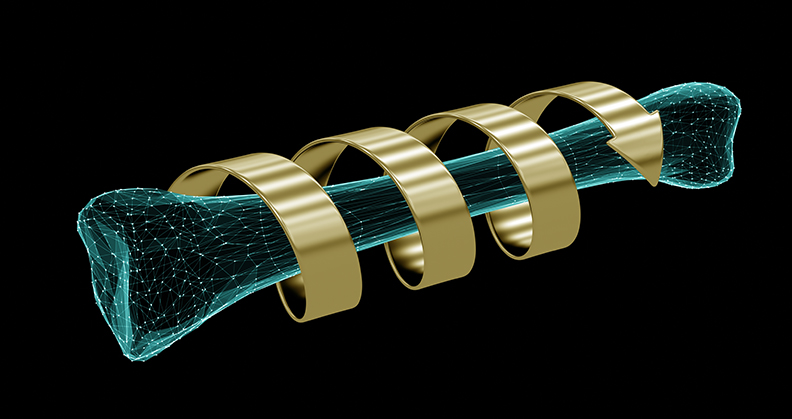
Shin fractures have a reputation for being especially challenging for the patients who suffer from them, as well as the orthopedic surgeons who work to heal them. According to trauma surgeon and Professor Bergita Ganse, Dr. med., roughly 14 out of 100 shin fractures treated with fixation plates do not heal properly.
“When using external monitoring techniques,” Dr. Ganse said, “it is difficult to identify delayed healing early enough for us to usefully intervene. This often means a prolonged route to recovery for the patient and very high costs for the health system.”
To address the problem of delayed healing, Dr. Ganse and an interdisciplinary team of medical specialists, engineers and computer scientists are developing a smart implant designed to monitor healing at the fracture site and stimulate the repair process when needed. A prototype of the fracture fixation device is currently in development and planned for 2025.
The team chose fractures because they can take weeks or months to heal, and 5% to 10% of cases end with a non-union, said Dr. Ganse, who is coordinating the “Smart Implants” project at Saarland University in Germany.
“To reduce costs, to bring patients back to work faster and to shorten immobilization time, it would be great if non-unions could be avoided and if the healing time of fractures could be shortened,” she said. “It has already been known since the 1980s that controlled cyclic axial micro-movement of 0.5 mm in the fracture gap can decrease the healing time by over 20%. In addition, non-unions were massively decreased by this method. Back then, external fixators were used to apply the movement. Now, we’re trying to bring it under the skin.”
While numerous fracture fixation devices are on the market, the researchers noted that these plates are passive components. Today’s typical treatment to use a standard-size plate and screws is not suitable when you consider that every fracture is unique and heals differently.
The smart implant consists of a fracture plate that has an embedded silicon element and embedded nitinol wires that provide what Dr. Ganse describes as a “massage function” that stimulates healing at the fracture site. A computer chip is included to process data, receive commands and send data via Bluetooth.
“The SMA (shape memory alloy) wires we use are made of nitinol, and they will shorten when they are warmed up via an electric current,” Dr. Ganse said. “We use springs to lengthen them again for cyclic movement.”


Trauma surgeon Dr. Bergita Ganse is project coordinator for the ‘Smart Implants’ project. For patients with a broken shin bone, a new generation of smart orthopedic implants is being developed that can not only monitor healing progression at the bone fracture site, but can use controlled micromotions to actively stimulate the repair process. Photo credit: Oliver Dietze
Currently, the implant monitors changes in stiffness at the fracture gap. Dr. Ganse and her team also plan to use accelerometers that will teach AI algorithms to learn when and for how long to stimulate the fracture gap.
When asked why shape memory wires were chosen for the implant, she highlighted the combination of small size and impressive power of the technology, two features that made it ideal for the orthopedic implant.
“The next step is to finalize a prototype implant and to run some first experiments in sheep,” she said. “We’ll try to make the new technology smaller and develop additional and more clever mechanisms. The current version of the plate is designed for tibial fractures, but we have a whole range of ideas for other bones, configurations and indications.”
The Smart Implants project at Saarland University was awarded €8 million in funding from the Werner Siemens Foundation and has been running since 2019. The interdisciplinary team of surgeons and researchers from applied mechanics, artificial intelligence, smart materials and mechatronics and automation technology are looking to develop multiple smart implant applications
PM
Patrick McGuire is a BONEZONE Contributor.




